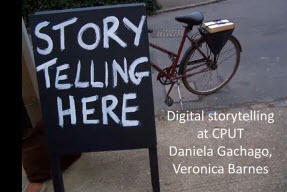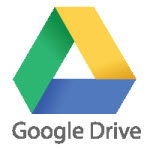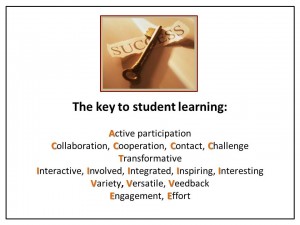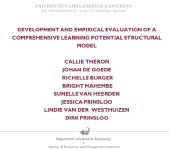Search the LTE domain at SU
e-Learning resources on the web
With the explosion of technology at a unprecedented rate it is often difficult to find good quality resources to help you come to grips with so many new things “teaching and learning “and especially e-Learning. Luckily there are also a number of very good internet resources that archive and disseminate excellent quality information, resources and networks. A few of them are listed below:
- E-Learning Beehive – (www.elearningbeehive.com/ ): “It is a place where you can get interesting and relevant information on elearning trends and practices, and find out about elearning workshops in the the Melbourne (Australia) area.”
- e-Learning Learning – (http://www.elearninglearning.com/): “Collecting the best information about eLearning”
- Mphil HSE e-Learning module blog – (http://mphilhse.blogspot.com): A Stellenbosch University Mphil programme module homepage that utilises a blog as central teaching and learning technology. The focus is more on health education e-Learning, but there are also quite a few very interesting broader resources and posts on everything e-Learning.
- Merlot – (http://www.merlot.org): Putting Educational Innovations Into Practice .Find peer reviewed online teaching and learning materials. Share advice and expertise about education with expert colleagues. Be recognized for your contributions to quality education.
- Designing and implementing e-Learning – (http://designing.flexiblelearning.net.au/): From the Australian Flexible Learning Frawork – supporting e-Learning opportunities.
Do you have your favorite and very useful e-learning resource websites? Please comment on this post and tell us about them!
Keywords: e-Learning, resources, internet, beehive, elearning learning, mphilhse,merlot
“Making a life” interview series – Stellenbosch lecturers talk about their teaching
We invite you to the Centre for Teaching and Learning or CTL’s ‘Making a life’ series, where we explore the attitudes and experiences of academics at Stellenbosch University, with regard to their roles in teaching, research and what is generally called ‘community involvement’.
The interviews were conducted by Dr Catherine Kell, a researcher commissioned by the CTL.
The series includes the opinions and thoughts around teaching and learning of:
1. Aslam Fataar
2. David Holgate
3. Nokwanda Makunga
4. Leslie Swartz
5. Rhoda Malgas
6. Elmarie Constandius
You are invited to subscribe to the series by clicking on the following link:
http://blogs.sun.ac.za/teaching/feed/ (if you have Microsoft Outlook it will ask you if you want to add the RSS feed to your inbox). In this way you will automatically receive the weekly series updates as they are published.
————————————–
Die Sentrum vir Onderrig en Leer nooi u uit na die ‘Making a life’ reeks waar ons die gesindhede en ervarings van akademici by die Universiteit van Stellenbosch ondersoek in terme van hul rolle in onderrig, navorsing en wat algemeen bekend staan as ‘gemeenskapsbetrokkenheid’.
Dr. Catherine Kell, ‘n navorser, is aangewys om die onderhoude te voer.
Die reeks sluit die volgende personeel se opinies en gedagtes rondom onderrig en leer in:
1. Aslam Fataar
2. David Holgate
3. Nokwanda Makunga
4. Leslie Swartz
5. Rhoda Malgas
6. Elmarie Costandius
U word uitgenooi om in te skryf vir die reeks deur op die volgende skakel te kliek:
http://blogs.sun.ac.za/teaching/feed/ (indien u Microsoft Outlook het, sal u gevra word of u die RSS voer wil byvoeg in u ‘inbox’). Hiervolgens sal u outomaties die weeklikse reeks se opdaterings ontvang soos hul gepubliseer word.
Auxin Lunch Hour Seminar 25 September 2012: Digital storytelling
Presenters: Daniela Gachago and Veronica Barnes from CPUT.
 Digital storytelling has entered Teaching and Learning in Higher Education as a way of improving student engagement, reflection and digital literacies, providing a new, more authentic way to knowledge acquisition. What started in 2010 with a pilot in the School of Education has been rolled out to students in Nursing, Industrial Design, Architectural Technology, Food Technology and Graphic Design at CPUT. In this seminar we presented diverse approaches to and experiences with digital storytelling across the disciplines.
Digital storytelling has entered Teaching and Learning in Higher Education as a way of improving student engagement, reflection and digital literacies, providing a new, more authentic way to knowledge acquisition. What started in 2010 with a pilot in the School of Education has been rolled out to students in Nursing, Industrial Design, Architectural Technology, Food Technology and Graphic Design at CPUT. In this seminar we presented diverse approaches to and experiences with digital storytelling across the disciplines.
To view the podcast video of the presentation, please click on this link.
Interested in Digital stories for your own practise? Please contact JP Bosman (jpbosman@sun.ac.za)
** The software that Daniela talked about in the presentation is Photo story for windows 3
Keywords: Daniela Gachago, Veronica Barnes, digital stories, digital storytelling, engagement, reflection, education, industrial design, teaching
Die voorspelling van studentesukses: watter faktore behoort ons in ag te neem?
Auxin Padkossessie – 31 Julie 2012
Watter faktore speel ’n rol in die sukses wat studente behaal? Hoe meet ons hierdie veranderlikes? En hoe gebruik ons hierdie kennis om die ontwikkeling van studente te ondersteun? Hierdie is vrae wat gevra is tydens ’n sessie, getiteld “Die voorspelling van studentesukses: watter faktore behoort ons in ag te neem?”, wat onlangs aangebied is as deel van die Auxin-projek. Die projek het ten doel om geleenthede vir akademiese personeel van die US te skep om voortdurend hulle onderrigvaardighede deur hulle bloot te stel aan gesprekke met kundiges en ander akademici op kampus.
Tydens die sessie het twee sprekers opgetree – prof Callie Theron (Bedryfsielkunde) en dr Alten du Plessis (Tredhou). Die aanbieders het die kompleksiteit van die verklaring en voorspelling van studentesukses beklemtoon deur verskillende perspektiewe en metodes in te span om die vraag te belig. In die meegaande potgooie (“podcasts”) kan u beide se aanbiedings sien sowel as van die gesprek wat deur die aanbiedinge gestimuleer is. Lewer gerus kommentaar indien u wil deelneem aan die gesprek!
Prof Callie Theron: Development and empirical evaluation of a comprehensive learning potential structural model (20 minutes, mp4, 32mb)
Dr Alten du Plessis: Mining wellness and performance data to identify at-risk First-Year engineering students (19 minutes, mp4, 47mb)
Participants and presenters: Podcast of the discussion (17 minutes, mp3, 12mb)
Google Drive – Adding drive to teaching, learning and research
 Imagine there is a way that a group of researchers or colleagues, or teachers or students, could have real-time secured access to the same documents, be able to edit them simultaneously, leave comments on the text and even have real-time chats about the changes to their research questionnaire, their departmental strategic vision, their reflection on the week’s topic, or their teamwork assignment and presentation …
Imagine there is a way that a group of researchers or colleagues, or teachers or students, could have real-time secured access to the same documents, be able to edit them simultaneously, leave comments on the text and even have real-time chats about the changes to their research questionnaire, their departmental strategic vision, their reflection on the week’s topic, or their teamwork assignment and presentation …
Drum roll … and in comes Google Drive (previously called Google Docs), a profound way of sharing and editing documents (texts, spreadsheets and presentations) collaboratively, and in real time. With this free service from Google it is possible to create new documents, upload existing ones, and then use them privately or share them out with colleagues or friends, or even with the whole wide world.
Although there are other excellent ways to share documents (like Sharepoint, Skydrive and Dropbox) using local or cloud based services, Google Drive works particularly well when it comes to combining a number of factors, especially the real-time editing and communication possibilities it affords teams who need to collaborate.
Here is a typical “recipe” and the steps of how Google can be used to achieve collaborative creation:
Step 1: Sign up for Google accounts:
This sounds like a strange first step, but from experience it can be said that if all participants in the process have active Google accounts (that means they know their usernames – usually a @gmail e-mail address – and their passwords – and have logged in with it the last week), and knows how to sign in to Google, the battle is half-way won. One can get a Google account by clicking here and then completing the steps (please remember to write down your Gmail e-mail address (i.e. your username) as well as your chosen password somewhere you can find it again!).
Send all Google e-mail addresses to one person in the group.
Step 2: Create a group folder and share it:
One person in the team goes to http://drive.google.com (and signs in with their Google account if not already signed in) and then creates a folder for the team (please note to take some time to create a menaingful name for the folder to be easily recognisable a year down the line!).
The same person then shares the folder with the rest of the group by inviting as editors the rest of the group using their Google e-mail addresses (see step 1).
Step 3: Create subfolders, documents and start collaborating:
Once the main folder is created, all documents and subfolders created in that main folder will be visible and editable by any of the members that were invited to share (in Step 2).
From here on it gets very interesting as everybody has to remember that the group functions as one organism that can add and delete at will to documents!
* Tips for smoothing out the collaborative editing:
- Have identified team members be owners of specific documents (almost like scribes that mostly write and do the changes).
- Others give their inputs by highlighting parts of the text and the inserting comments which appears on the righ-hand side of the text.
- Use the Chat function, where all team members that are signed in at the same time will be able to chat about the document using the chat service at the right hand side of the screen (this is hidden and can be made visible by clicking the “Others viewing” button on the right-hand top of the page.
- One can also download different versions of the document as Word/Exel/PPT to a local computer for archiving and revision-tracking purposes.
- Be very careful (and discuss and plan beforehand) with the naming of sub-folders and file names. The name should be descriptive and be easily identifiable as it can get quite confusing to only see files with dates, or arbitrary meaningless titles.
** Want to create a listserve for the team? To get even better collaboration, the team can all join a Google Group and then send an e-mail to anyone in the group by sending it to a single group e-mail address. The same process as above applies:
- All in the team make sure they have a Google account, and send the Google e-mail addresses to one team member.
- The one teammember then goes to http://groups.google.com and starts a New group.
- Once the group exists, the team member then invites all the other team members (with their Google e-mail addresses) to join the group.
- Once all the group members have accepted and joined, then all the group members can send an e-mail to the group’s e-mail address (typically something like your-group-name@googlegroups.com).
- Easy to keep everyone in the loop without having to paste everyone’s e-mail addresses in the To: field anymore!
Google Drive can also be downloaded as an application on your computer, so that you can sync documents from your computer, all the documents you create(d) on the internet, as well as all other supported devices (like iPad, Android etc), very easily. It creates a folder on your desktop in which you can save all your files that you want to archive and access, or share with teams.
For teaching and learning the applications are endless. From simple sharing of class notes, to a whole practical class collaboratively inputting data into a biology experiment’s data fields, Google Drive can be used creatively to support research, teaching and learning.
Keywords: google drive, google docs, google groups, collaboration, research, teaching, learning, teamwork
![]() Stellenbosh University is an associate member of a very exciting global initiative supported by HP as well as ISTE and the New Media Consortium. The aim of the initiative is to advance the teaching of STEM+ disciplines (Science, Technology, Engineering and Maths) through the use of innovations in technology.
Stellenbosh University is an associate member of a very exciting global initiative supported by HP as well as ISTE and the New Media Consortium. The aim of the initiative is to advance the teaching of STEM+ disciplines (Science, Technology, Engineering and Maths) through the use of innovations in technology.
Here is how the HP Catalyst Initiative (http://www.hp.com/go/hpcatalyst), as it is called, describes the project:
Innovating approaches to STEM
Education in science, technology, engineering, and math (STEM) is key to social innovation and economic opportunity. This is true for students who become STEM professionals, and for all students who graduate in the 21st century. But literacy in STEM subjects is lagging, and skilled STEM students are in short supply. HP launched the Catalyst Initiative to get to the root causes of the challenge, and to explore the future of STEM education. With the HP Catalyst Initiative, we’re establishing a network of leading educators, education institutions, and key stakeholders in selected countries to explore innovative approaches to STEM education. By combining technology with expertise, we can empower great teaching and create transformational learning experiences for students.
There are a host of very interesting projects around STEM that lecturers might find very interesting (and maybe even link up with), from real-time in-class formative assessment through tablets (InkSurvey – http://ticc.mines.edu ) to virtual specialised remote chemistry laboroatories and using Google Docs Spreadheets for capturing live experiment data.
To view video posters of the 57+ projects please visit: http://catalyst.nmc.org
Find more information (and to link up) on the initiative’s Facebook page: www.facebook.com/hpcatalyst and by following the Twitter hashtag #hpcatalyst
Other interesting software related to the innitiative:
- www.classroomsalon.com (web-based educational platform that promotes opportunities for social learning – Ananda Gunawardena, Carnegie Mellon University).
- InkSurvey – http://ticc.mines.edu (A classroom tool for real-time formative assessment – Frank & Susan Kowalski, Colorado School of Mines).
- Google docs spreadsheets for realtime and collaborative input and analysis of laboratory data (Norm Herr, California State University).
- OpenSim: free software to create SecondLife like worlds.
- www.okcreate.org (use un: measure5 and pw: measure5): online system to create, distill and assess creativity and critical thinking.
- Classroom presenter (http://classroompresenter.cs.washington.edu/ ): Free software for tablets for annotation as well as remote desktop sharing (i.e a teacher can see all the students desktops’ remotely, and can share presentations wit ha class – great for smaller classrooms where students have tablets).
Keywords: STEM Science Technology Engineering Maths HP Catalyst formative assessement InkSurvey Classroom Salon
Auxin Workshop held on 28 February 2012 at CTL
Assessment of Professionalism as Graduate Attribute
 Professionalism is no doubt an attribute that you would say you would like your students to leave university with. Do you, however, actually assess professionalism in your students? This can be a tricky business! At this first “Padkos” session of the Auxin Project for 2012, a brief overview of the challenges posed by the assessment of professionalism, was given. Results of recent research at Stellenbosch about this was shared and there was the opportunity to discuss how one might meet these challenges.
Professionalism is no doubt an attribute that you would say you would like your students to leave university with. Do you, however, actually assess professionalism in your students? This can be a tricky business! At this first “Padkos” session of the Auxin Project for 2012, a brief overview of the challenges posed by the assessment of professionalism, was given. Results of recent research at Stellenbosch about this was shared and there was the opportunity to discuss how one might meet these challenges.
Speaker
Alma Snyman is an Occupational Therapist working at the Jan Kriel School. She also works as a part time lecturer with the Department of Occupational Therapy at Stellenbosch University and has an interest in the assessment of professionalism of graduates. Alma recently completed her MPhil in Health Sciences Education, for which she undertook research on the assessment of professionalism. She also finds time to serve on the team management for the South African para-cycling team.
The workshop is available as podcasts:
- Click here to download the presentation only by Alma (24 minutes; mp4; 16mb)
- Click here to watch the podcast of the full workshop online (55 minutes; flash+mp4; 42mb)
- Click here to download the podcast of the full workshop as a screen video (55 minutes; mp4; 42mb)
- Click here to download an audio version of the full workshop only (55 minutes; mp3; 20mb)
![]() Alma Snyman’s workshop presentation is licensed under a Creative Commons Attribution-NonCommercial-NoDerivs 3.0 Unported License.
Alma Snyman’s workshop presentation is licensed under a Creative Commons Attribution-NonCommercial-NoDerivs 3.0 Unported License.
Copyright 2012 Centre for Teaching and Learning, Stellenbosch University and Alma Snyman
Keywords: professionalism, assessment, clinical, observation, alma snyman, auxin



